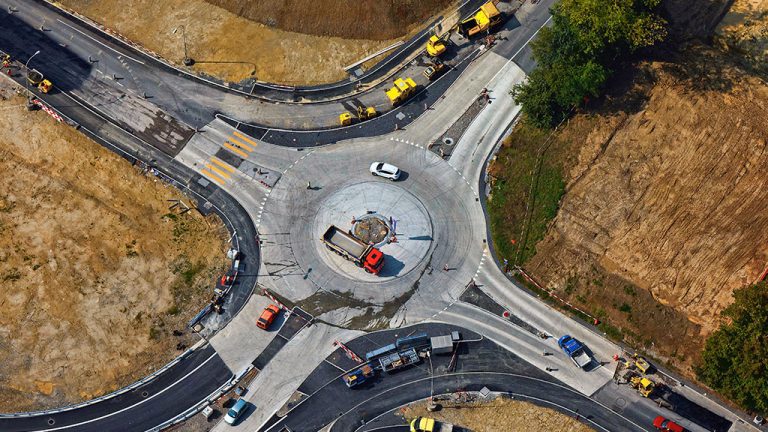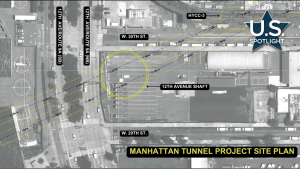Significant improvements have been made to some areas of infrastructure in Georgia, but old challenges still exist and new threats have emerged, states a report prepared by the American Society of Civil Engineers (ASCE).
The report is the fifth of its kind and covers 14 categories. A committee of experts gave the state a grade of C-plus, the same as a previous evaluation, which indicates the infrastructure is mediocre and requires attention.
Six categories saw grade increases and three experienced reduced marks due mainly to unpredictable funding streams that are inadequate for lifecycle costs. Grades remained stable in five of the report categories.
Authors of the 150-page report say Georgia’s population of 10.9 million people is growing rapidly as businesses move to the state to capitalize on expanding airports and improved road networks. However, “while the state thrives with this growth, the increase brings many challenges to its infrastructure.”
According to the report, infrastructure improvements occurred in several areas in recent years. For example, Georgia’s transportation system progressed due to projects being completed with more state funding.
In 2022, 98 per cent of Georgia’s 9,382 bridges were rated in fair or good condition – better than the 93-per-cent grade in 2017 and higher than the 78 per cent in 2013. The state’s aviation budget also grew significantly from $13 million in 2017 to $44 million in 2023, and more airports had runways of 5,000 feet or greater.
Critical dam infrastructure improved due to increased investment and preparedness. Seventy-eight per cent of Georgia’s 510 high-hazard potential dams had emergency action plans in 2023, up 33 per cent from 2018.
Meanwhile, the Georgia Port Authority’s marine and inland port infrastructure achieved a 35-per-cent increase in cargo handling capacity from 2018 to 2022, with a workforce one-third larger than a few years earlier.
In spite of the progress, though, the report reveals old issues still persist and new problems have evolved. Atlanta, for instance, is the 10th most congested city in the U.S. and state funding in Georgia accounts for less than two per cent of total public transit funding, with transit costs outpacing the revenue collected.
Statewide, drinking water investment needs were estimated to be $19.7 billion in 2023, up from $12.5 billion in 2018. Utility rates for drinking water, wastewater services and electricity, and funding for stormwater, have not kept up with significant cost increases and national averages. Drinking water systems are also struggling to balance expanding for growth while maintaining asset replacement and renewal.
The report states funding is needed for infrastructure improvements to keep pace with operational needs, allow for new economic development opportunities and deal with the impacts of climate extremes. It suggests smart water technologies be adopted to improve efficiencies and, as the workforce gets older, greater efforts be made to publicize the need for engineers in drinking water innovation.
Additionally, roads have become less safe as 1,982 Georgian road users lost their lives in 2022, including 339 pedestrians – 11-per-cent higher than in 2021 – completing a five-year trend of annual increases, the report notes. Presently, 67 per cent of interstate roads are in good condition, seven percentage points higher than in 2019, but the state still faces congestion in major corridors, specifically around Atlanta and Savannah.
Georgia ranks sixth nationally for pavement conditions based on reports from the Bureau of Transportation and Statistics, but the expected increase in the state’s population will likely result in a substantial increase of vehicles on roads which will present challenges associated with growth, the report states.
Meantime, Georgia roadways will be faced with new challenges as the state moves forward with embracing EV infrastructure and changes in freight movement. Over the coming decade, roadways will also be forced to adapt to challenges presented by sea level rise, inland and river flooding.
The report recommends dedicated state funding be increased to prioritize important projects that reduce freight delays and improve pedestrian safety with raised medians and physically protected bike lanes. It also suggests roadways be designed to include sidewalks on both sides of a thoroughfare.
While stormwater infrastructure has improved in recent years, the authors write “progress has not kept up with threats from increased runoff and pollutant loads” and, in Metro Atlanta alone, there is an annual gap of more than $620 million between stormwater infrastructure needs and the provided funding.
Many local governments are struggling to simply maintain their basic stormwater pipes and structures and enforcement of private stormwater infrastructure maintenance is even more challenging due to a lack of enforcement personnel and property owners lacking funds for maintenance, the report states, with a situation brewing where infrastructure can no longer handle more frequently occurring intense storm events.
Georgia’s 93 transit systems are also under threat as the state has primarily left transit funding to local municipalities and agencies, but the costs are outpacing revenue. To fix the problem, the report suggests Georgia establish reliable state-level transit funding to address the anticipated $1.7-billion annual need.











Recent Comments
comments for this post are closed